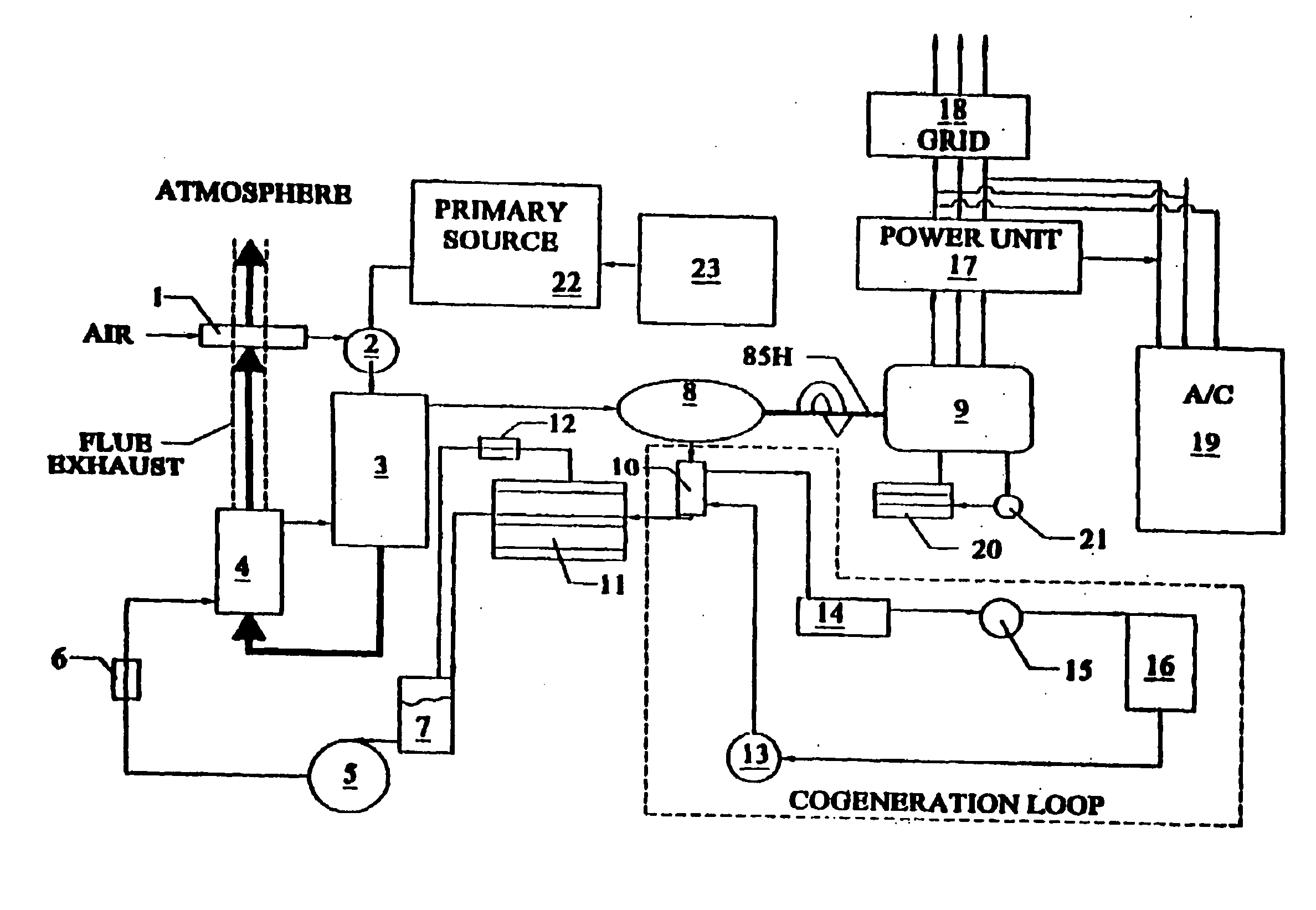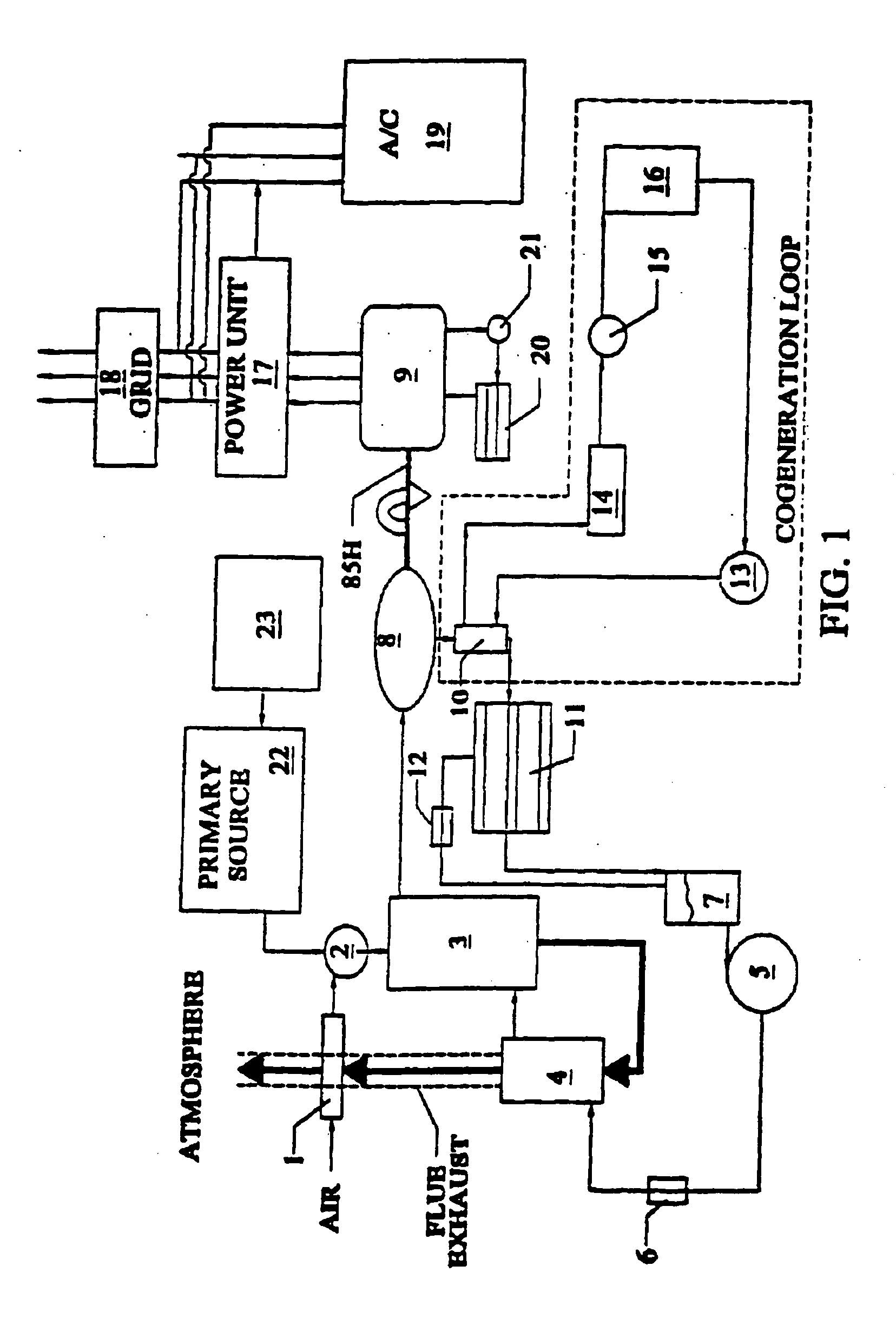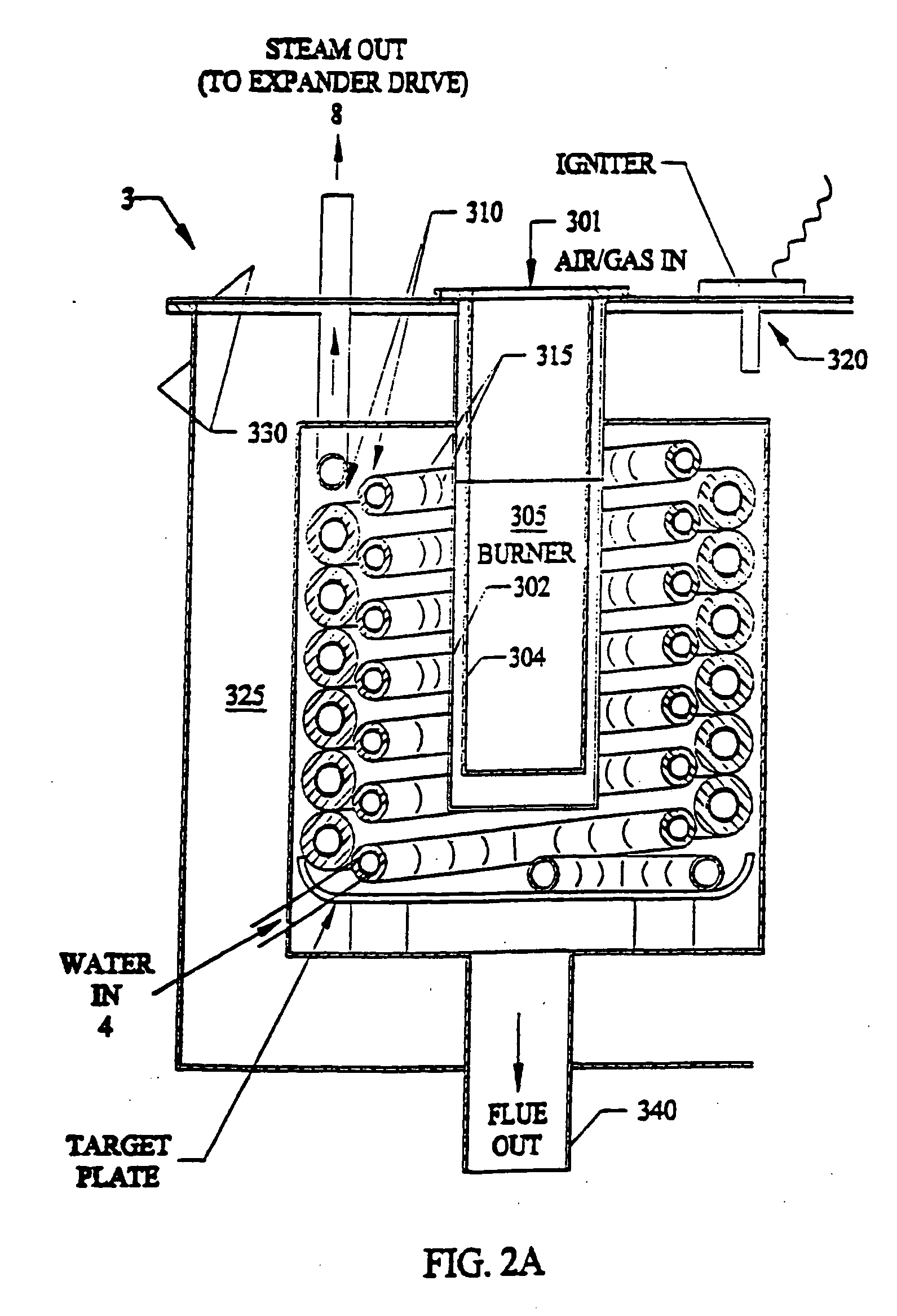Power generation methods and systems
a technology of power generation and power supply, applied in the direction of electric generator control, lighting and heating apparatus, machines/engines, etc., can solve the problems of increasing the cost of electricity, the number of people in the world who do not have access to electricity, cooling, or reliable heating at low cost, and the current cost of traditional power generation methods and systems
- Summary
- Abstract
- Description
- Claims
- Application Information
AI Technical Summary
Benefits of technology
Problems solved by technology
Method used
Image
Examples
embodiment 2000
[0104]FIG. 14 shows a third preferred embodiment 2000 for powering a mechanically driven air conditioning compressor 2510 using the novel steam generator 2100, expander drive 2400 and steam condenser 2200 of the invention. The steam generator 2100 referenced above in FIGS. 2A and 2B turns water into steam by burning a renewable or non-renewable fuel source such as natural gas, propane, or hydrogen or any other vaporous or liquid fuel. The hot pressurized steam enters expander 2400 where it is expanded (reduced in pressure and temperature and increased in volume) producing the work used to rotate output driveshaft 2450. The output drive shaft is mechanically connected to a direct drive air conditioning compressor 2510 and used to compress the refrigerant used in the cooling process. The remaining air conditioning system components would be identical to those used in a standard off-the-shelf high efficiency air conditioning unit 2550 (fan, condenser and motor for supplying cooled air)...
embodiment 3000
[0105]FIG. 15 shows a fourth preferred embodiment 3000 for driving an electric generator 3500, or alternator, supplying electricity to any electrically powered device or stand alone end use system using the novel steam generator 3100 (boiler 8FIGS. 2A and 2B), expander drive 3400 and steam condenser 3200 of the invention. The steam generator 3100 referenced above in FIGS. 2A and 2B turns water into steam by burning a renewable or non-renewable fuel source 22 such as natural gas, propane or hydrogen, or any other vaporous or liquid fuel. The hot high pressure steam enters the expander 3400 where it is expanded (reduced in pressure and temperature and increased in volume) producing the work used to rotate output driveshaft 3450. The output driveshaft is mechanically connected to an electrical generator 3500 or alternator which is used to produce the electrical power. The low pressure / low temperature exhaust stream exiting the expander 3400 passes to a steam to water / air condenser exch...
embodiment 4000
[0108]FIG. 16 shows a fifth preferred embodiment 4000 for supplying electrical power to an electrical vehicle 4600 using the novel thermal generator 4100, expander drive 4400, and steam condenser 4200 components of the invention. The thermal generator 4100 referenced above in FIGS. 2A and 2B turns water into steam by burning a renewable or non-renewable fuel source 22 such as natural gas, propane or hydrogen, or any other vaporous or liquid fuel. The hot pressurized steam enters the expander 4400 and is expanded (reduced in pressure and temperature and increased in volume) causing work which is used to rotate driveshaft 4450. The driveshaft is mechanically connected to an electrical generator 4500 or alternator. The electric generator 4500 or alternator supplies electricity to the vehicle battery, or batteries 4610 which are used to store the electrical energy for future use or to electric motors 4620, 4630, 4640, 4650 that are used to drive the vehicle, by rotating axles connected ...
PUM
 Login to View More
Login to View More Abstract
Description
Claims
Application Information
 Login to View More
Login to View More - R&D
- Intellectual Property
- Life Sciences
- Materials
- Tech Scout
- Unparalleled Data Quality
- Higher Quality Content
- 60% Fewer Hallucinations
Browse by: Latest US Patents, China's latest patents, Technical Efficacy Thesaurus, Application Domain, Technology Topic, Popular Technical Reports.
© 2025 PatSnap. All rights reserved.Legal|Privacy policy|Modern Slavery Act Transparency Statement|Sitemap|About US| Contact US: help@patsnap.com



